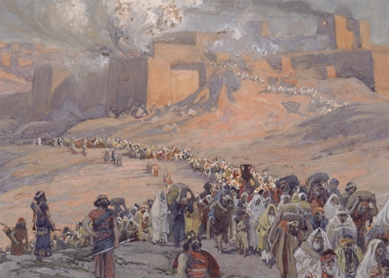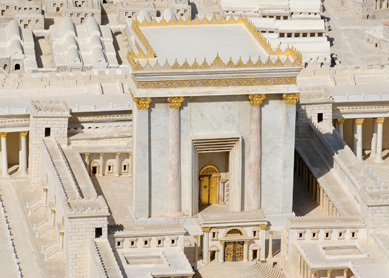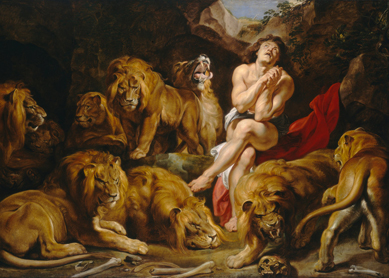Why does Daniel get down on his knees to pray three times a day with his windows opened toward Jerusalem (Dan 6:10)? The reason is that prayerful bodies matter in the book of Daniel. Though supposedly serving in the Persian king Darius’s government, in this tale Daniel disobeys the king’s law to worship him. Instead, Daniel follows his own religious law, developing habitual practices that involve his body. His posture of kneeling is unique in the book and offers a strong contrast to pagan religious practice in the Babylonian and Persian Empires, as well as the Greek Seleucid Empire, which threatened the Jerusalem temple at the time of the book’s composition. In Greek religion, praying individuals stood with hands outstretched, palms facing upward. Prayers were recited aloud in public accompanied by a sacrifice. In contrast, Daniel prays in isolation in an upper room, kneeling down in “service.” Daniel’s prayer signals his resistance to empire and his radically alternative allegiance. Rather than offer honor and praise to King Darius in a public space, he seeks mercy by confessing sin, praying, and praising his own God.
In the wake of the destruction of the first temple in Jerusalem, Judeans learned to be faithful without their central place of sacrifice by developing embodied practices of prayer. Individual and group prayers provided an alternate means of communication with their ancestral god. Books composed in the Second Temple period, like Ezra-Nehemiah, Judith, Tobit, and Daniel, are rich in prayers and references to prayer practices. Daniel’s kneeling posture before windows opened toward Jerusalem should be understood in relation to a prayer offered by King Solomon at the dedication of the Temple in Jerusalem. Solomon’s prayer, also offered while kneeling (1Kgs 8:54), emphasizes the importance of Jerusalem as a central fulcrum by which prayers might reach God in heaven. It suggests that prayers offered by those in exile and directed toward Jerusalem will be effective. (1Kgs 8:46-48). Moreover, by praying three times a day, Daniel synchronized his body with the divinely ordained times of temple sacrifice. His prayer in Dan 9 likewise is likewise timed with the evening sacrifice (Dan 9:3). Thus Daniel’s bodily posture claims space and time as his own in a distinctively Judean way.
The story of the three young men in Dan 3 also illustrates the prominence of proper worship by contrasting the behavior of royal bodies with the disciplined bodies of Judeans. Civic religion in the Babylonian Empire was a matter of great public pageantry, intended to draw honor and attention to the ruler as well as the patron deity of the city. Praying was not a matter of private devotion done quietly but an embodied spectacle. Nebuchadnezzar is satirically depicted as a man of outsized emotions, with a comparably out-of-control body and misplaced devotion. He falls on his face in prostration to worship Daniel (Dan 2:46), then commands that all peoples and nations worship a ninety-foot golden statue. The refusal of Shadrach, Meshach, and Abednego to “fall down” mechanically in prostrate worship before the metal body results in their “falling” into the fiery furnace. Their bound, sacrificial bodies are then divinely liberated in order to walk freely. The prayer practices of the Judean exiles signal to Daniel’s audience that managing one’s body properly can provide strength against the ravages of empire.




